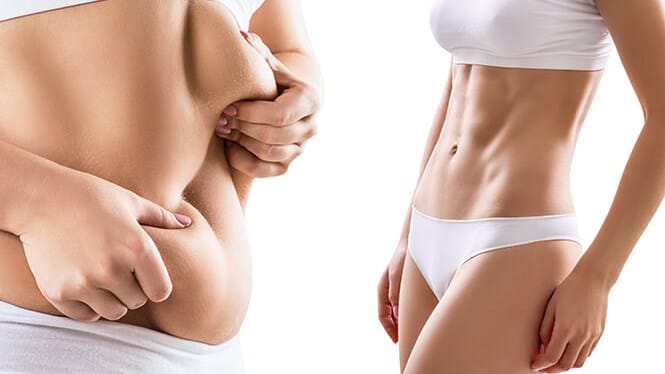Dr. Karen Leong | 05/12/2020
So many women come in to see me because they want something done about their tummies. The most common question I get is “can I lipo my tummy or do I need a tummy tuck”? The quick and dirty answer is really based on two things: 1) how much extra skin vs fatty tissue you have and 2) whether your abdominal muscles are aligned in the center or whether they’ve become separated giving you a bulge instead of a nice, flat stomach.
There are some things that quickly stand out to me when I examine a new patient for a tummy consultation. These are:
- Saggy, excess skin that you either hide in your pants or that hangs down over your waistband.
- Fat deposits in your tummy and flanks
- Stretch marks (how many and where they are located)
- Belly button hernia
- Diastasis recti or muscle separation of your abs
If you have extra skin, a lot of stretch marks, and/or muscle separation, chances are I will tell you that you need a tummy tuck to get the best result. By best result I mean a flat tummy, no more extra skin, and a contoured, hourglass waist.
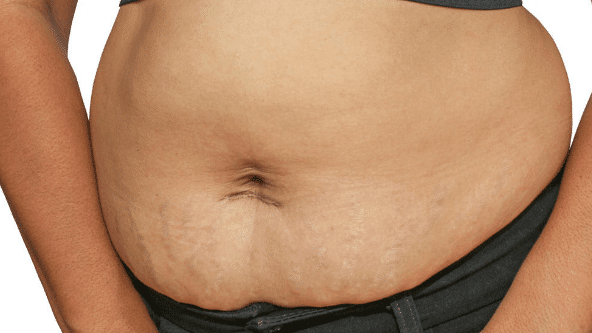
About Your Tummy Tuck Operation
Anesthesia: General
Length of surgery: 2.5-3 hours SAME DAY SURGERY
Recovery : 7-10 days average
Cost: $10,000 – $12,000 surgeon’s fee (does not include facility or anesthesia charges)
Where is the Scar?
I place my incision very low, about 5 cm above the cleft of the vagina. The incision then parallels the panniculus (extra skin and fatty tissue) and ends where the panniculus ends. In most women, this incision goes from hip to hip but some people need a more extended scar and others can get away with a smaller scar. The goal is for your to be able to wear a string bikini without the scar showing.
How Much Skin is Removed?
In a full tummy tuck, I am usually able to take all the skin and tissue from the incision to just above your belly button. The skin above the belly button now becomes the skin for your entire tummy. Think of a crop top and pulling the hem down to meet your pants. That’s in essence what I’m doing.
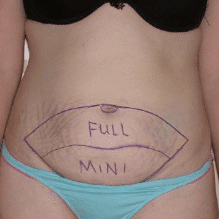
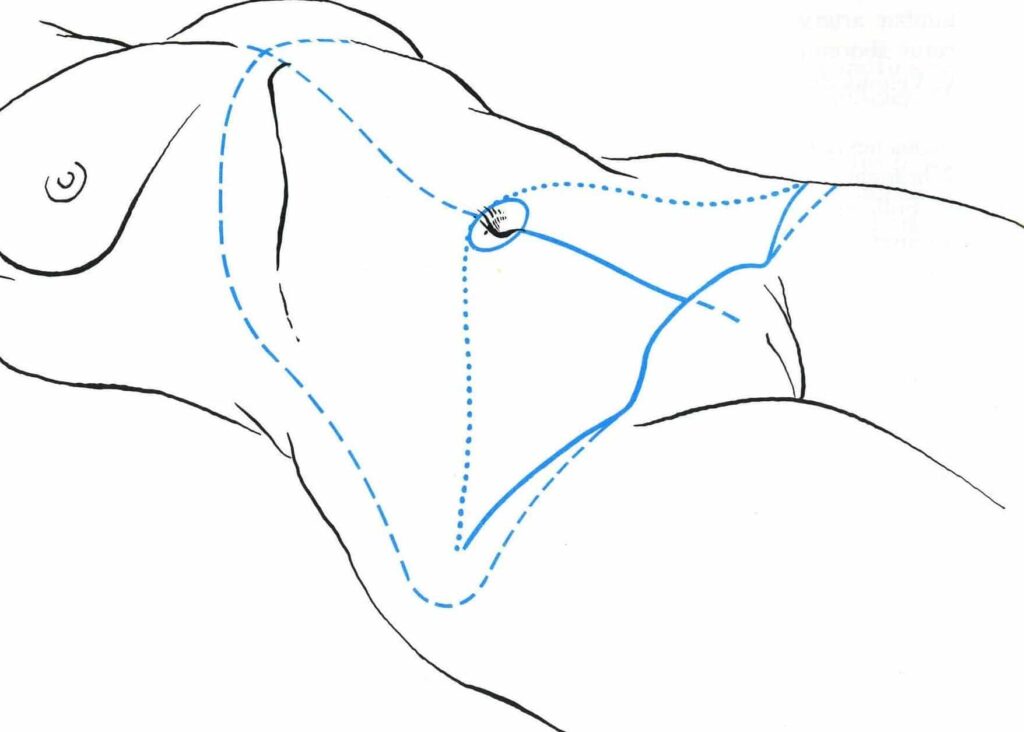
What About My Belly Button?
The umbilical stalk or the stalk of the belly button is saved and a new opening is made in the skin flap so that you have a smaller, “innie” belly button. Some people have umbilical hernias, which usually contain fat that bulges out through a fascial defect near the umbilicus. I repair these at the time of tummy tuck so again your result is an “innie” belly button.
How Do You Repair the Muscle?
Your rectus abdominus muscles form your core. When you gain a lot of weight or carry a baby, there is stress placed on the fascia holding the muscles together. When there is a gap between the muscles, this is known as diastasis recti. It is not a hernia. In order to realign the muscles, strong sutures must be placed along the edge of each muscle to bring them back to the midline. Repairing the muscle will strengthen your core and give you an hourglass shape.
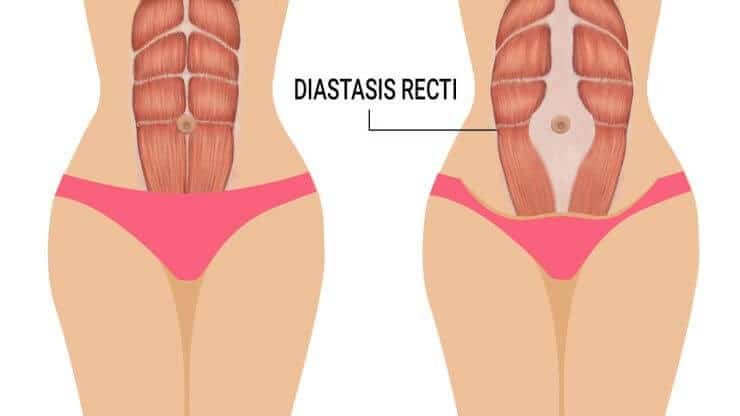
What About Drains?
During our consultation, I look at how much excess skin and tissue you have and how much liposuction I may need to do and decide whether I will go with a drainless approach (preferred technique and done in the majority of my tummy tucks) or if I will need to use drains. Drains prevent fluid collection and fluid collects any time you traumatize tissue (such as during surgery). If I do not anticipate a large amount of fluid collecting, I perform progressive tension sutures. These are quilting sutures placed under the skin to reattach the tummy skin to the underlying muscle and effectively closes off the potential space where fluid could collect.
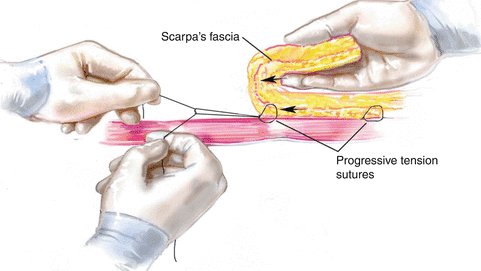
Do I Still Need Lipo if I’m Getting a Tummy Tuck?
Oftentimes I recommend liposuction of the flanks or upper back to ensure that your results are the best they can be. Body contouring in my mind is 360 degrees, your tummy may be flat but if you don’t have a nice waistline then I feel I have done you a disservice. Not everyone has stubborn fat, but many of us do!
Will I Be in a Lot of Pain?
I use Exparel, which is a long acting numbing medication, along the muscle repair at the time of surgery. The muscle is what causes the most discomfort after surgery and this medication gives my patients about 72 hours of relief. I still prescribe appropriate pain medications for after surgery but this has been a game changer for many.
What Do I Do After Surgery?
This is same day surgery, you will go home. You will be sore and tired but I still encourage you to get up and walk to the bathroom the first night. The next day, I see you and check your incisions. You can shower that day. You need to stay in a slightly bent over position so that there isn’t too much pulling on your incision. Patients are at risk for blood clots in the legs and lungs after bigger procedures like tummy tucks so I ask that you walk at least 3 times a day and do isometric exercises while in bed to keep the blood flowing.
How Long do the Sutures Stay In? And Drains if I Have Them?
Sutures typically are removed 10-12 days after surgery. The belly button sutures may come out a few days sooner. Drains may stay in 1-2 weeks.
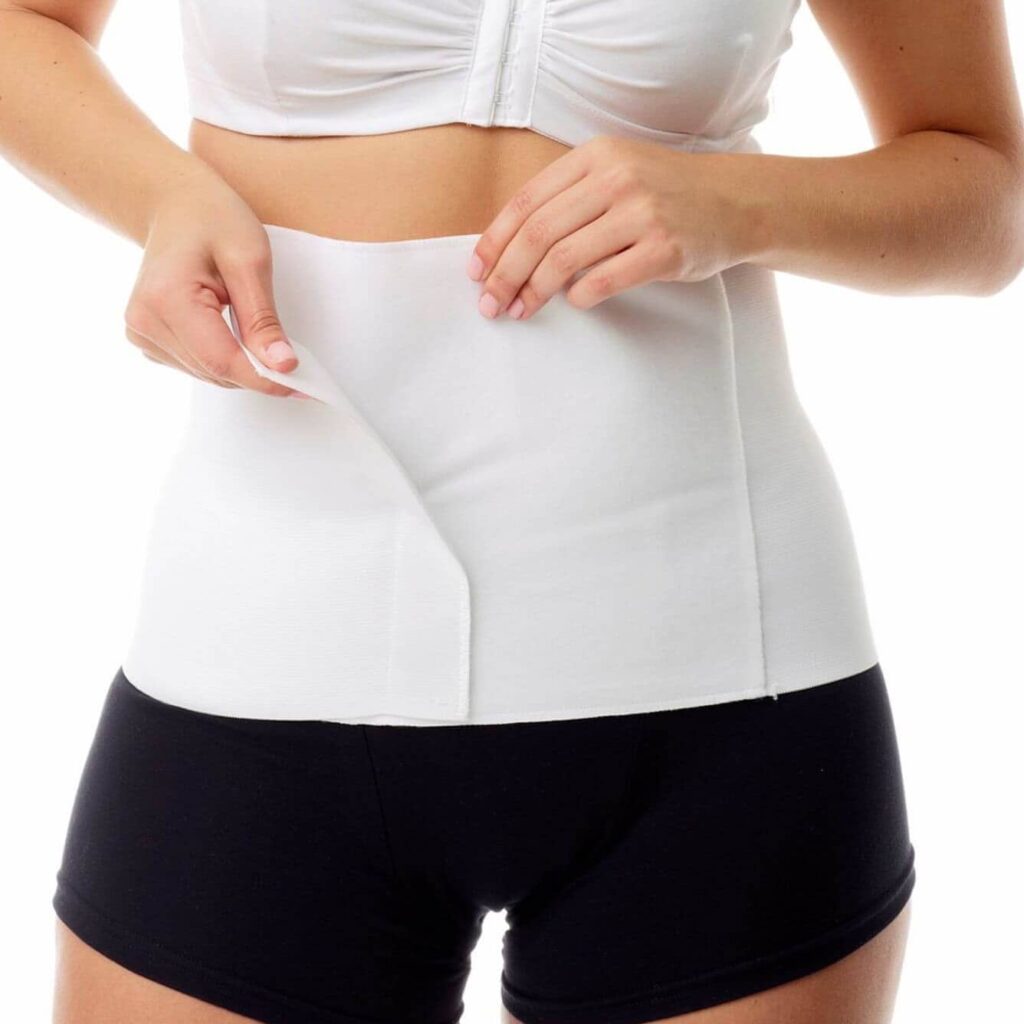
Can I Order a Faja or Compression Garment?
All tummy tuck patients are put into abdominal binders on the day of surgery. If you have additional lipo done, you will likely have a compression garment. Swelling tends to peak at about 72 hours so I like to have my patients treated within the first 2 days with lymphatic massage. The lymphatics drain extra fluid from the body but surgery interrupts or stuns the flow of the drainage. Massage will help the edema fluid to pass out of the body sooner.
Can I Have my Breasts or Other Procedures are Done at the Same Time?
Yes! A Tummy tuck is commonly a procedure performed in mommy makeovers, which may combine surgeries such as breast augmentation/lift), lipo (any areas), BBL (fat transfer to the buttocks) among others. Obviously your safety is my number one concern but we can discuss these options during your consultation.
When Can I Exercise?
I ask that you wait 3-4 weeks before starting back with light cardio and strength exercises, but I do not want you to do any core work for about 6 weeks to allow the muscle repair to heal. I also ask you to stay out of the pool/ocean or sauna for 4 weeks to prevent any wound complications or infections.

Do You Offer Virtual Consultations?
Yes!
GET VIRTUAL CONSULTATION INFORMATION
So that’s tummy tuck in a nutshell!
I do a Q&A Live via Instagram Live every Tuesday. The video below features Tummy Tuck.

